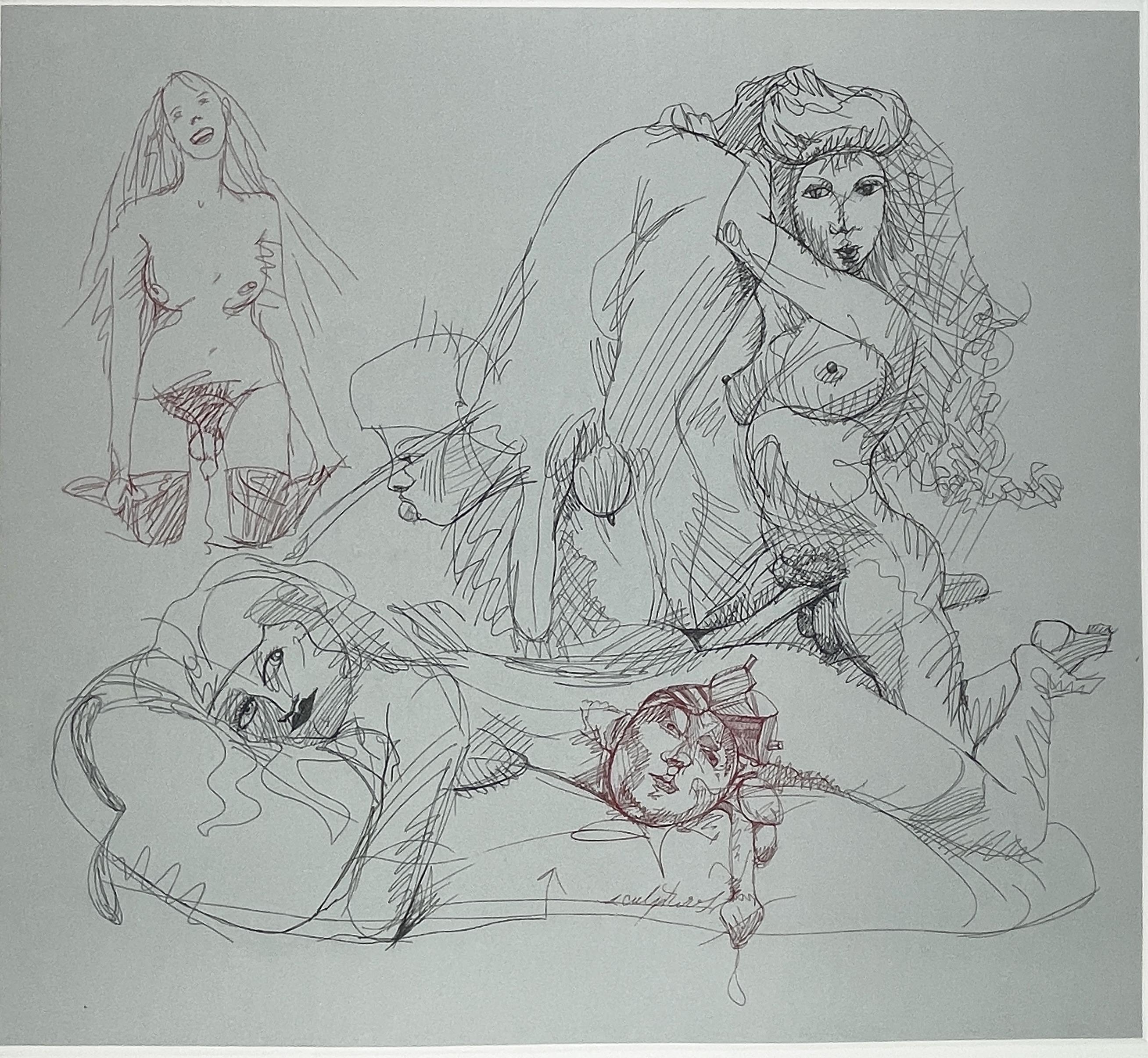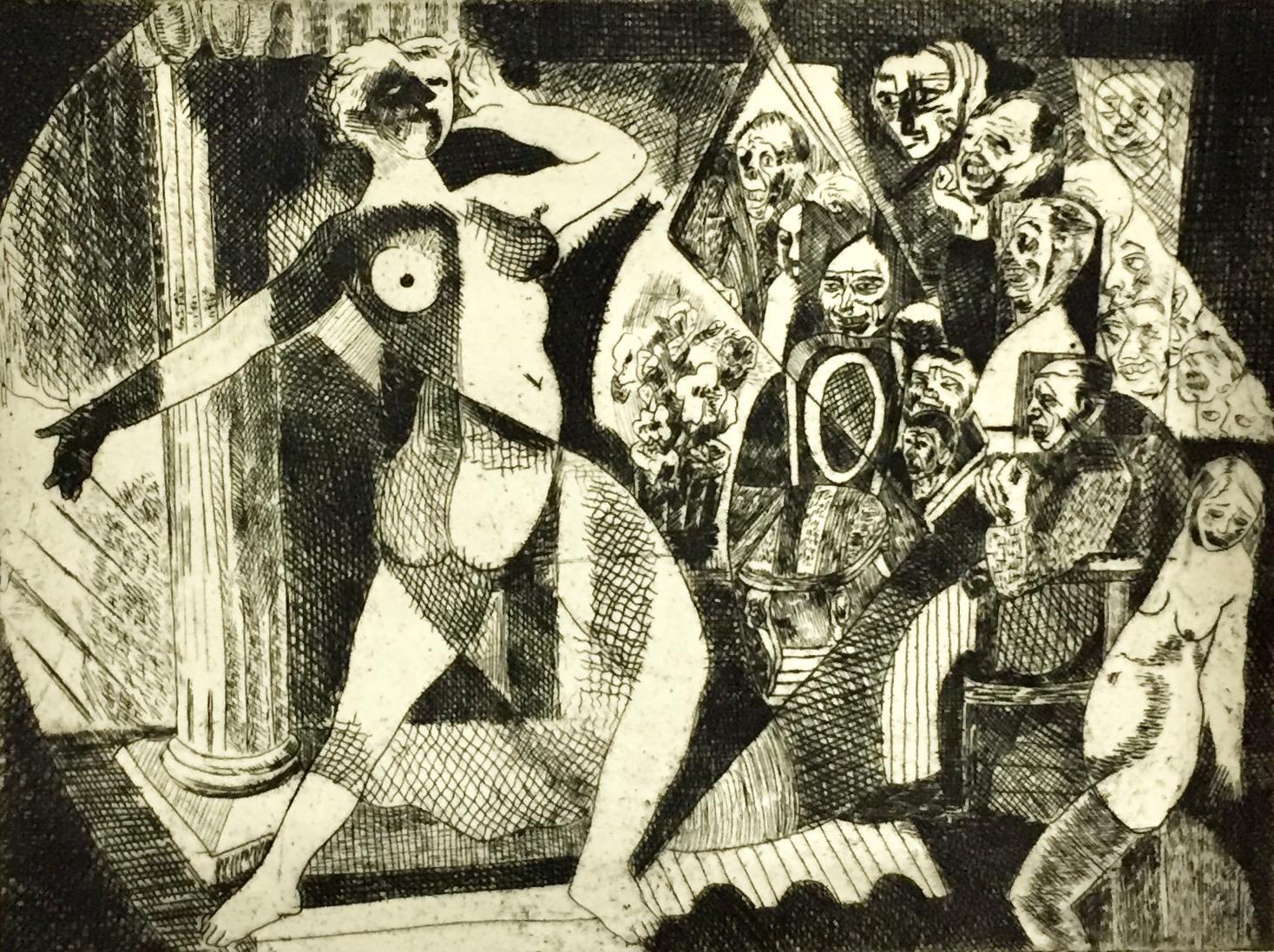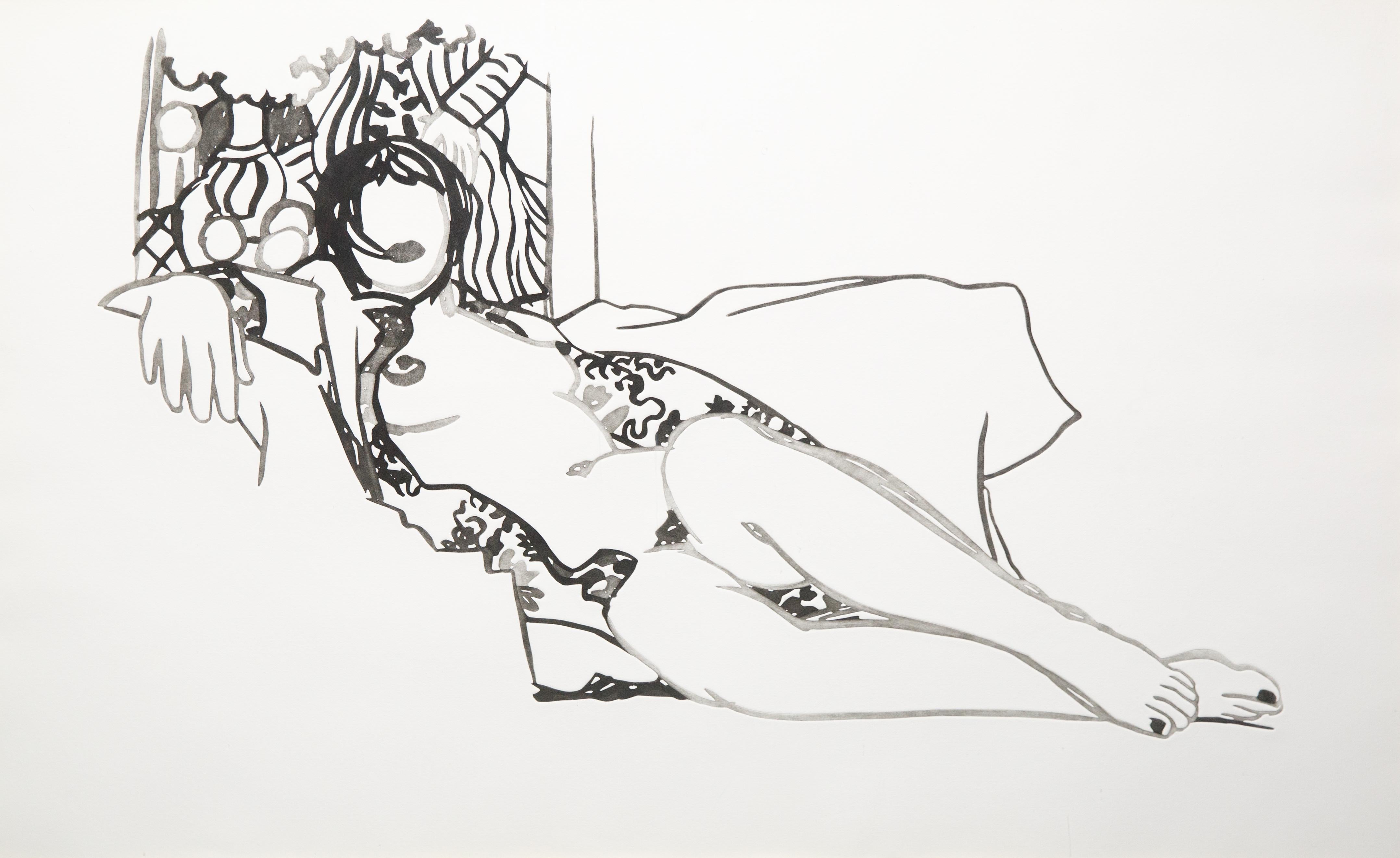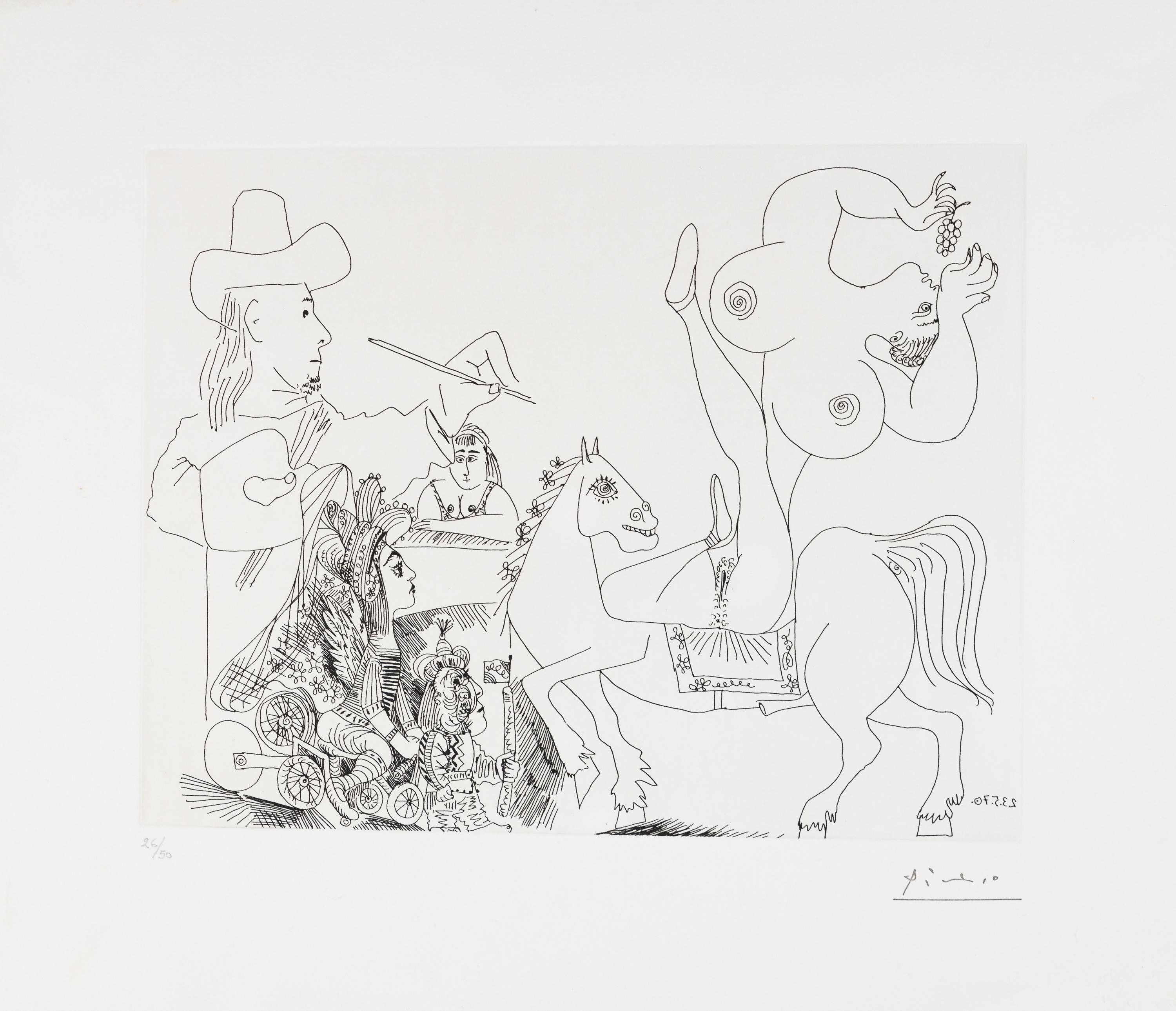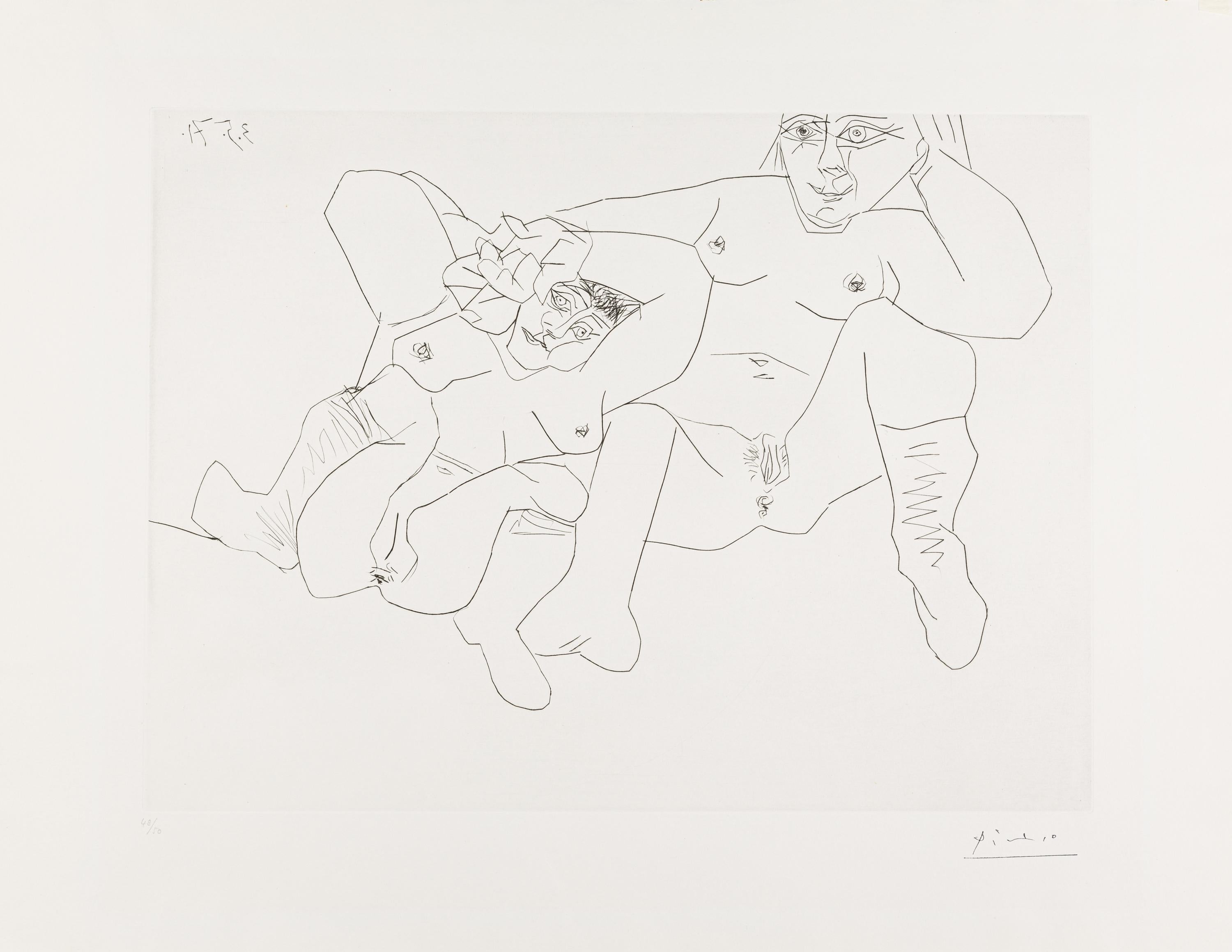Items Similar to Ossip Zadkine - Ultimate Step - Original Etching
Want more images or videos?
Request additional images or videos from the seller
1 of 5
Ossip ZadkineOssip Zadkine - Ultimate Step - Original Etching1966
1966
About the Item
Etching monogrammed in the plate.
Illustration for a Robert Ganzo's poem "Lespugue"
Editions Marcel Sautier, Paris, 1966.
Conditions: Good Conditions
Dimensions: 25,5 x 16,5 cm.
Vellum paper
Référence Czwiklitzer n°55.
1890
Zadkine was born on the 14th of July in Vitebsk, a city in Belarussia, on the Dvina.
His father Ephime teaches classical languages at the local seminar.
His mother Sophie Lester descended from Scots, who emigrated at the time of Peter the Great.
1905
His parents send him to Sunderland, in the North of England, where his mother’s family lives.
He studies English and attends modelling courses at the local Art School.
1905-1909
He travels to London without his parents permission where he attends courses at the Regent Street Polytechnicum.
In order to earn his living, he plans to work with a stonecutter.
He visits the British Museum and studies classical sculpture there.
Returns to Smolensk where he produces his first sculpture.
Goes back to London.
1909-1910
Zadkine settles in Paris and studies in the ecole Nationale des Beaux-Arts.
Finds a workshop in a building called La Ruche, in the XVe arrondissement.
1911
Zadkine presents statues and drawings at the annual Salon d’Automne and at the Salon des Indépendants.
It is the ‘cubists’ who draw his attention in Paris.
Is essentially close to Russian students who get together in a cafe of the ‘Quartier Latin’.
Has himself called Joe Zadkine until 1914.
1912-1913
Finds a room in the neighbourhood of Montparnasse, in the rue de Vaugirard.
Studies Roman sculpture.
Zadkine is immortalized by his neighbour, photographer Marc Vaux, in his new workshop.
Meets Brancusi, Guillaume Apollinaire, Jacques Lipchitz, Pablo Picasso, Antoine Bourdelle, Leopold Survage and Robert Delaunay.
Henri Matisse visits Zadkine’s workshop.
1914-1915
Exhibition at the Freie Sezession in Berlin, at De Onafhankelijken in Amsterdam (Holland) and at
the Allied Artists Association in London.
Thanks to collector Paul Rodocanachi, he can settle in a workshop in the rue Rousselet.
Becomes friends with Modigliani.
1916-1917
Works as a stretcher-bearer on the front. Produces drawings and watercolours dealing with war.
Zadkine is discharged in 1917.
He says he is ‘bodily and spiritually’ ruined by the war.
After his stay in the Epernay hospital he recovers in Bruniquel, in the southwest of France.
1918-1919
Makes a series of 20 war etchings.
Goes on with his cubic work and puts hollow and full forms against each other.
He makes contrasting profiles.
1920
Gets married on the 14 th of August in Bruniquel (France) with his neighbour from rue Rousselet, Valentine Prax (1897-1981) and withTsuguharu Foujita (1886-1968) as witness.
The first Zadkine retrospective takes place in his workshop (rue Rousselet 35).
1921
The first monograph on Zadkine’s work is published by the editor of the Italian newspaper Valori Plastici.
It is written by Maurice Raynal, one of the few French admirers of Zadkine’s new cubist work.
Most of the time, Zadkine makes deconstructed stone or wooden statues, which strike by their strongly geometric, closed forms.
Produces numerous watercolors and gouaches.
1922
The museum of Grenoble buys the golded wooden statue ‘Le Fauve’, a marble female head and a gouache.
1923-1925
Several trips to Italy.
Exhibition in Takenodai gallery in Tokyo Japan.
1926
Retrospective in Barbazanges gallery in the Parisian rue de la Boetie.
1928
The Zadkines settle in the white house behind the rue díAssas (‘La folie d’Assas’ as Zadkine called it), it will become the Zadkine museum after the death of Valentine Prax.
First retrospective in London.
1929
Andre De Ridder publishes a monograph on Zadkine.
The latter travels to Brussels for a commission and stays in Deurne, Holland with his friend
Hendrik Wiegersma.
1930
In his work, a new, agile and baroque style emerges, taking shape after the Second World War.
Exhibition of gouaches in the Arts Club of Chicago.
1933-1937
Exhibitions in Chicago, Paris, Brussels, Antwerp and New York.
First trip to the United States in 1937.
1934
Buys a big house in Les Arques (France), in the Lot, where he works in the summertime.
1935
The city of Paris buys the three meter high wooden statue Orphee for the Petit Palais.
It is given a spot in the new Musee d’Art moderne de la Ville de Paris shortly after.
1941-1945
During the Second World War, Zadkine flees to the United States.
He finds a workshop in New York.
Exhibits in Wildenstein gallery.
Stays in Arizona. From 1944 on, he teaches twice a week at the Art Students League.
Teaches for a while in North Carolina.
In September 1945, he comes back from America ‘sick, sad and penniless’.
1948-1950
Exhibition in the Stedelijk Museum of Amsterdam.
Retrospective in the Parisian Musée National d’Art moderne.
Zadkine receives the Big Sculpture Price at the Biennal event of Venice.
Exhibition in the Museum Boijmans in Rotterdam.
It is there that Zadkine presents for the first time a draft of La ville detruite.
Gives classes until 1958 at the Parisian Academie de la Grande Chaumiere.
1953
The six-meter-high war monument La ville detruite (The destroyed city)
is placed on the 15 th of May at the Leuvehaven in Rotterdam, Holland.
1955 – 1960
Zadkine makes sculptures dedicated to Vincent Van Gogh.
Presents five exhibitions, which cause stirs in Canada, where he gives lectures,
as well as in the United States.
The travelling exhibition is then presented in Seattle and San Francisco.
He has innumerable exhibitions, notably in six Japanese cities.
Devotes much time to graphical work.
1961
The Monument Van Gogh is unveiled in Auvers-sur-Oise, France.
Van Gogh statues are made during the following years for Zundert, Holland and Saint-Remy-de-Provence, France.
Big exhibition in the London Tate Gallery.
1962
First exhibition of tapestries (Galerie Lacloche, Paris).
1963
Begins the third version of La Demeure, commissioned by the Nederlandse Bank.
This statue is designed to be placed against the frontage of the central office, situated on the Amsterdam Frederiksplein.
The statue Les deux Freres Van Gogh is unveiled in Zundert, Holland, Vincent van Gogh’s Place of birth.
1965 – 1966
The photograph book Le Monde secret de Zadkine vu par D. Buchanan, featuring 25 poems by Zadkine, and the album La Foret humaine, with its 18 lithographs by Zadkine, are published.
Big retrospective in the Kunsthaus of Zurich Switzerland.
1967
Ossip Zadkine dies on the 25th of November in a Parisian hospital.
He is buried in the Montparnasse cemetery.
- Creator:
- Creation Year:1966
- Dimensions:Height: 10.04 in (25.5 cm)Width: 6.5 in (16.5 cm)Depth: 0.04 in (1 mm)
- Medium:
- Movement & Style:
- Period:
- Condition:
- Gallery Location:Collonge Bellerive, Geneve, CH
- Reference Number:1stDibs: LU16122113263
About the Seller
4.9
Gold Seller
These expertly vetted sellers are highly rated and consistently exceed customer expectations.
Established in 2015
1stDibs seller since 2015
908 sales on 1stDibs
Typical response time: 1 hour
- ShippingRetrieving quote...Ships From: Collonge Bellerive, Geneve, Switzerland
- Return PolicyA return for this item may be initiated within 7 days of delivery.
More From This SellerView All
- Leonor Fini - Untitled - Original Handsigned EtchingBy Leonor FiniLocated in Collonge Bellerive, Geneve, CHLeonor Fini - Untitled - Original Handsigned Etching Circa 1982 On colored paper Handsigned and Numbered Edition: 275 Dimensions: 69 x 52.5 cm Leonor Fini is considered one of the most important women artists of the mid-twentieth century, along with Leonora Carrington, Frida Kahlo, Meret Oppenheim, Remedios Varo, and Dorothea Tanning – most of whom Fini knew well. Her career, which spanned some six decades, included painting, graphic design, book illustration, product design (the renowned torso-shaped perfume bottle for Schiaparelli’s Shocking), and set and costume design for theatre, ballet, opera, and film. In this compellingly readable, exhaustively researched account, author Peter Webb brings Fini’s provocative art and unconventional personal life, as well as the vibrant avant-garde world in which she revolved, vividly in life. Born in Buenos Aires in 1907 (August 30 – January 18, 1996, Paris) to Italian and Argentine parents, Leonor grew up in Trieste, Italy, raised by her strong-willed, independent mother, Malvina. She was a virtually self-taught artist, learing anatomy directly from studying cadavers in the local morgue and absorbing composition and technique from the Old Masters through books and visits to museums. Fini’s fledging attempts at painting in Trieste let her to Milan, where she participated in her first group exhibition in 1929, and then to Paris in 1931. Her vivacious personality and flamboyant attire instantly garnered her a spotlight in the Parisian art world and she soon developed close relationships with the leading surrealist writers and painters, including Paul Eluard, Salvador Dali, Man Ray, and Max Ernst, who became her lover for a time. The only surrealist she could not abide because of his misogyny was André Breton. Although she repeatedly exhibited with them, she never considered herself a surrealist. The American dealer Julien Levy, very much impressed by Fini’s painting and smitten by her eccentric charms, invited her to New York in 1936, where she took part in a joint gallery exhibition with Max Ernst and met many American surrealists, including Joseph Cornell and Pavel Tchelitchew. Her work was included in MoMA’s pivotal Fantastic Art, Dada and Surrealism exhibition, along with De Chirico, Dali, Ernst, and Yves Tanguy. In 1939 in Paris she curated an exhibition of surrealist furniture for her childhood friend Leo Castelli for the opening of his first gallery. Introductions to her exhibition catalogues were written by De Chirico, Ernst, and Jean Cocteau. A predominant theme of Fini’s art is the complex relationship between the sexes, primarily the interplay between the dominant female and the passive, androgynous male. In many of her most powerful works, the female takes the form of a sphinx, often with the face of the artist. Fini was also an accomplished portraitist; among her subjects were Stanislao Lepri...Category
1980s Modern Nude Prints
MaterialsEtching
- Dufza - Paris - Quai des Grands Augustins - Original Handsigned EtchingLocated in Collonge Bellerive, Geneve, CHDufza - Paris - Quai des Grands Augustins - Original Handsigned Etching Circa 1940 Handsigned in pencil Dimensions: 20 x 25 cmCategory
1940s Modern Nude Prints
MaterialsEtching
- Dufza - Paris - Quai de la Tournelle - Original Handsigned EtchingLocated in Collonge Bellerive, Geneve, CHDufza - Paris - Quai de la Tournelle - Original Handsigned Etching Circa 1940 Handsigned in pencil Dimensions: 20 x 25 cm Unumbered as issuedCategory
1940s Modern Nude Prints
MaterialsEtching
- André Derain - Ovid's Heroides - Original EtchingBy André DerainLocated in Collonge Bellerive, Geneve, CHAndré Derain - Ovid's Heroides Original Etching Edition of 134 Dimensions: 32 x 25 cm Ovide [Marcel Prevost], Héroïdes, Paris, Société des Cent-une, 1938...Category
1930s Modern Nude Prints
MaterialsEtching
- Dufza - Paris Notre Dame - Original Handsigned EtchingLocated in Collonge Bellerive, Geneve, CHDufza - Paris Notre Dame - Original Handsigned Etching Circa 1940 Handsigned in pencil Dimensions: 20 x 25 cm Unumbered as issuedCategory
1940s Modern Nude Prints
MaterialsEtching
- André Derain - Ovid's Heroides - Original EtchingBy André DerainLocated in Collonge Bellerive, Geneve, CHAndré Derain - Ovid's Heroides Original Etching Edition of 134 Dimensions: 32 x 25 cm Ovide [Marcel Prevost], Héroïdes, Paris, Société des Cent-une, 1938 Andre Derain was born in 1880 in Chatou, an artist colony outside Paris. In 1898, he enrolled in the Academie Carriere in Paris where he met Matisse. He attended art school and in 1900, set up a studio with Maurice deVlaminck. After his military service from 1900-1904, Derain exhibited his work at the Salon des Independants and then at the Salon d'Automne with Matisse, Vlaminck and others, thus creating the movement of Fauvism.He worked with Henri Matisse in 1905 at Collioure, and participated in the 1905 Salon d’Automne with Matisse, Vlaminck, and Braque, the exhibition in which this group was labeled as Fauves, or Wild Beasts. Along with Vlaminck, Derain was one of the first artists to collect the tribal art of Africa which was influential to many of the artists of the early 20th century. In 1906, Derain met Picasso and his dealer, who purchased Derain's entire studio, creating newfound financial success. During this time, he was hired for the illustrations for works by Guillaume Apollinaire and Andre Breton. After World War I, his friend's Cubism movement affected his art, along with influence from Classicism and African Art. Derain stayed in Paris during most of the Occupation, where he was esteemed by the Nazis because of his artistic integrity. Hitler's Foreign Minister commissioned him to paint a family portrait, but he politely refused. His popularity began to decline after the war because of disagreement over new artistic movements. He later lost most of his eyesight due to illness, which may have been the reason he was hit by a truck in 1954, dying from shock at the age of 74. Derain’s Fauve paintings are typically bright with intense color. Influenced by the work of Cézanne as well as the early Cubist paintings of Picasso and Braque’s, Derain’s style changed and by 1912, the paintings became more traditional and structured. For the remainder of his career, he continued to investigate different compositional methods including the perspective of Cézanne and the pointillism of Seurat. He also designed ballet sets and made a number of sculptures. At the turn of the century, Andre Derain exhibited at the radical Fauve Salon d’Automne (1905) and was one of the founding members of the Fauvist movement together with his life-long friends Matisse and Vlaminck. The works he produced in this period, often under the guidance of Matisse, have been counted among the masterpieces of Fauvism. From around 1918, Derain turned his back on the avant-garde and had begun to explore some of the more traditional genres of Western art, including landscapes. His main source of inspiration once the Fauves group had dispersed was found in the Louvre, where he admired the early Renaissance works in particular. Talking of his frequent visits there, he once said, ‘That seemed to me then, the true, pure absolute painting.’ His work evolved through many styles and, most significantly, turned back to the past, particularly after 1922 when Lenin had publicly pronounced his disdain for abstract art. Derain built up an immense and fascinating collection of paintings, sculpture and objets d’art throughout his life which aided his experimentation and was reflected in his work between 1930 and 1945. During these years, his painting technique displayed the most avenues of invention, using a repertoire of primitivist motifs. His eclectic collection was constantly changing. In 1930 he sold his African collection in exchange for bronzes of antiquity and the Renaissance which indicated a real change of interest in the objects, as did his later pursuit of Greek ceramic painting and his enthusiasm for grand cycles of literary and antique themes...Category
1930s Modern Nude Prints
MaterialsEtching
You May Also Like
- Four Figures and a Head, on Giant Phallus by Claes Oldenburg erotic nude sceneBy Claes OldenburgLocated in New York, NYThis sensuous and playful scene is characteristic of Oldenburg’s printmaking ouevre: a veritable heap of women displaying various expressions of joy and come-hither coquettishness. T...Category
1970s Modern Figurative Prints
MaterialsEtching
- Claes Oldenburg mythological Erotic Fantasy Suite print set of 6 medusa mermaidBy Claes OldenburgLocated in New York, NYThese erotic etchings depict mythological and fantasy creatures as striking nudes. A host of sensuous and shocking figures include a mermaid, Medusa, and women in both jubilant and p...Category
1970s Modern Figurative Prints
MaterialsEtching
- Irving Guyer, Strip ActBy Irving GuyerLocated in New York, NYIrving Guyer captured the bustle of the city in a modernist style. This print is signed and titled in pencil.Category
Mid-20th Century Modern Figurative Prints
MaterialsEtching
- Monica Nude with MatisseBy Tom WesselmannLocated in New York, NYA very good impression of this etching and aquatint. Signed 75/75 in pencil by Wesselmann.Category
1990s Modern Nude Prints
MaterialsEtching, Aquatint
- Le peintre au cirqueBy Pablo PicassoLocated in Wien, 9- Plate 55 from the Suite 156 - with stamp signature - dated in the plate 2.3.70 - edition 26/50 - cat. raisonné Bloch 1910Category
1970s Modern Figurative Prints
MaterialsDrypoint, Etching
- Untitled, 1971By Pablo PicassoLocated in Wien, 9- Plate 118 from the Suite 156 - edition 48/50 - stamp signature - dated in the plate 17.5.71 - cat. raisonné Bloch 1973; cat. raisonné Baer 1982Category
1970s Modern Figurative Prints
MaterialsEtching, Drypoint
